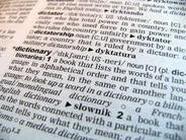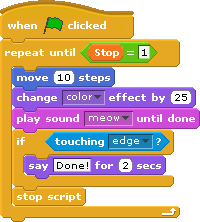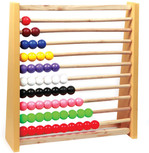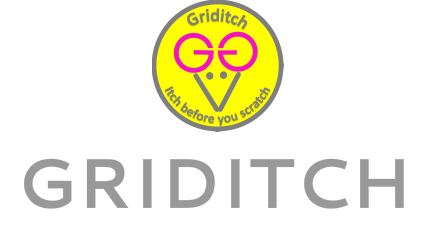Physical vs Digital

From Chess to Monopoly, almost every classic board game has undergone a digital makeover, transforming the game play, but not always for the better. The ritual of setting up and placing pieces on the board, the smell, touch and even the subtle sounds all adds to a sensory experience that cannot be replicated in the digital domain.
The pioneering work of Jean Piaget illustrates how the minds of children aged 6 to 11 are best suited to learning concretely, as they begin to think logically, but struggle with abstract reasoning. This goes some way in explaining why even some 5000 years later the abacus is still used to introduce children to the fundamentals of mathematics.

Teaching a child the fundamentals of computing on a computer, is analogous to using a dictionary to teach the alphabet. Although in theory, both are possible, the superfluous bits of information can become distracting often resulting in the child believing the subject is far to complex for them to pursue.

This begs the question why for so many children their first introduction to computing starts with visual programming languages like Scratch? To be sure, Scratch is an excellent tool to help children write their first computer programs, but the fundamental building blocks should be taught first.
The first computer science degree took place in Cambridge in 1963 and it's fair to say the art in teaching the subject is still in the experimental phase. Perhaps it took many years before scholars perfected the art of teaching mathematics and literacy and in today's digital world history is once again repeating itself.
The first computer science degree took place in Cambridge in 1963 and it's fair to say the art in teaching the subject is still in the experimental phase. Perhaps it took many years before scholars perfected the art of teaching mathematics and literacy and in today's digital world history is once again repeating itself.
Skills Gap
Creating the next generation of software engineers has been an on ongoing concern for the technology industry for some time. Teaching coding skills to children is seen as a long-term solution to the “skills gap” between the number of technology jobs and the people qualified to fill them.
In September 2014 England became the first country in the world to mandate coding in primary and secondary schools. Actually this statement is factually incorrect, but you'd be forgiven for not spotting the deliberate mistake. The word coding should be replaced with 'computing' which is a much broader term of which coding is a part of.
Another key component to the computing curriculum particularly for primary school children is 'computational thinking'.
Computational thinking allows us to take a complex problem, understand what the problem is and develop possible solutions. We can then present these solutions in a way that a computer, a human, or both, can understand. This can be a complex and multi stage process involving an understanding of the key concepts: algorithms, pattern recognition, decomposition and abstraction. Leading computing education lecturer Miles Berry explains each stage clearly in his post on ‘Computational thinking in primary schools’.
In September 2014 England became the first country in the world to mandate coding in primary and secondary schools. Actually this statement is factually incorrect, but you'd be forgiven for not spotting the deliberate mistake. The word coding should be replaced with 'computing' which is a much broader term of which coding is a part of.
Another key component to the computing curriculum particularly for primary school children is 'computational thinking'.
Computational thinking allows us to take a complex problem, understand what the problem is and develop possible solutions. We can then present these solutions in a way that a computer, a human, or both, can understand. This can be a complex and multi stage process involving an understanding of the key concepts: algorithms, pattern recognition, decomposition and abstraction. Leading computing education lecturer Miles Berry explains each stage clearly in his post on ‘Computational thinking in primary schools’.
...and it's not just the children that need to get to grips with coding
There is a "growing divide" between technology that is available in UK classrooms and teachers' ability to use it. A YouGov poll, found that more than three-quarters of respondents (76%) are using technology in all or most of their lessons. But the survey found only 15% of teachers are "totally computer savvy".

So imagine for a moment an abacus for computing, an intuitive tool that provides a hands-on way to explore computing at its most basic level, enabling children to understand the fundamental concepts through creativity and play!
Let's turn the tables and give a physical makeover to software, how cool would that be? and more importantly, could this do for coding what the abacus did for maths?
Let's turn the tables and give a physical makeover to software, how cool would that be? and more importantly, could this do for coding what the abacus did for maths?
